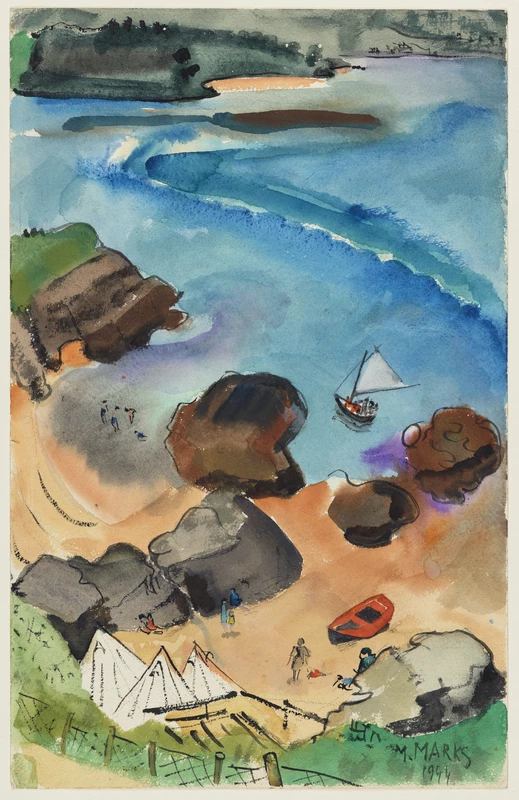This piece was inspired by the photography of David Hurn, which portrays scenes of modern and traditional Welsh culture.
I was raised only a stone’s throw from the beach, in the village of Port Eynon, the southernmost point of the Gower peninsula. If you’re patient enough to follow the bendy corners of the A4118, down the spine of the peninsula, you’ll arrive here eventually. Port Eynon, or ‘Porth Einon’ as mum makes sure to call it, is thought to have been named after an 11th-century Welsh prince named Einon. The story goes that he built a castle in the village, but its remains have never been found.
From the mid-1600s onwards, local residents made their money from smuggling. Artefacts of this past still remain — if you know what you’re looking for. Culver Hole is a rocky cleft built into the cliffside of Overton Mere. It’s believed to have been built in the 13th or 14th century. There’s even talk of a secret tunnel that used to shuttle contraband to the nearby Salthouse which now stands derelict. An aptly named pub, The Smugglers, is home to the village’s karaoke machine, which can be heard for miles on a Tuesday night.
These days, Port Eynon makes its money from triple-battered fish and deep-fried potato. So much so, it has two fish & chip shops. Next door to each other in fact. One is better than the other, but I’ll let you find that out for yourself.
In the height of summer, they rake in thousands of pounds a day from the hundreds of tourists who descend on the village. Some make the trip from Swansea or the nearby Valleys. Other come from far and wide, the North of England or Scotland even.
Since we were old enough to earn, my two brothers and I have worked in some of the only businesses in the village. Twm frying chips, Gruff selling wetsuits in the surf shop and I pouring steamed milk into espresso in the only café. We’d start work in late April or the start of May. By the time September came around, sales would start to slow. The Indian Summer would come and go. By the time we went back to school or university our job contracts had ended; doors closed, shutters down.
Until the next summer rolled around of course.
Port Eynon’s population fluctuates with the seasons too. Hovering beneath the five hundred in winter and doubling if not tripling with visitors in summer. Campsites own a monopoly over the village just about. Since I was a child, I’ve been trained to know what to say when tourists ask for directions to one of the four campsites: Skysea, Newpark, Bank Farm and Burrows.
Year on year, the same faces return. Caravan sites gradually fill from the Easter bank holiday onwards, before emptying again in September.
It’s how it goes every year in Port Eynon. Six months on, six months off.
‘Llanw’ is Welsh for tide in its literal sense: the regular swelling and influx of the sea. But ‘llanw’ is also South Wales dialect for an alternative form of the verb ‘llenwi’, to fill.
In some senses, Port Eynon has its own internal tide. It relies on the injection of tourists in summer to sustain it for the long winter spent in hibernation. For the locals, it’s a mixed story. For myself and my siblings, this pattern of work suited us just fine. After the summer ended, we’d go back to school or university.
Some, like the tourists, fled from the village, spending the winter in tropical locations across the world. Others remained for the winter, left to witness the brute force of storms raging across the coast.
A part of the tide only one half of the village could see.



